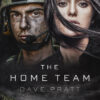Good morning from Gail Gaymer Martin at www.gailmartin.com.
I sort of chuckled when I realized last time I wrote here, I was supposed to be blogging on Love Inspired Authors Blog so you received a blog from me on traveling and how it affects me life. I guess that has to do with writing also, but I wanted to finish my three blogs related to Description. So here you are – Part III Presenting Action.
Describing action brings a story to life, but the amount of description is regulated by the kind of action. Ask yourself these kinds of questions: How significant the action is to the plot? Does the action move the story forward and make a difference? Does the action create tension and deepen conflict? These are some of the questions an author must ask before detailing action in a scene. If the answer is yes to the above, describing the action works. If the activity is mundane , the often less is best. With those thoughts in mind, take a look at these scenarios.
Even though action adds reality to a novel, be careful when describing action used to offer a sense of place to the reader. This can be from cooking dinner to a fist fight in a bar or a sniper on a rooftop. Whether the reader needs to see each detail is something you must decide. The sense of place and reality scenes are where writers sometimes go overboard with description that becomes boringand often slow the pacing. Megan pulled her car keys from her pocket, slipped a key into the ignition, turned it, and listened to the motor purr. Do you need this detail? The line could be a simple as Megan turned the key in the ignition and heard the car purr. Even shorter. Megan started her car. If starting her car isn’t significant, then Megan drove off works. Sometimes too much information adds nothing and slows the story.
On the other hand, readers can be picky. When my proofreader read my upcoming novel, he questioned a line in the scene where the hero was giving the heroine a cooking lesson: He dipped the rolled chicken into the egg mixture, then the crumbs and placed them in the oven as the scent of chicken broth rose from the pot. The question was did I need to say he placed the chicken rolls into a pan and then placed them in the oven. I let it go assuming readers would understand the chicken had been first placed in a baking dish. But it demonstrates that making those judgement calls can be the difference between saying too much or too little. I took a chance that readers would get it.
Looking at a more complex scene, such as the underbrush in the woods I mentioned in the first two parts of Description, authors can add detail for effect. Detail can accomplish tension, foreshadow event to come, or create emotion. What if a young woman found a body in the woods? To set up the event, the author can use more detail to heighten the drama of the scene.
Scene
:
A young woman walks through a meadow and looks ahead at the distance woods. She feels the summer heat, hears the buzz of insects on the wildflowers, and gets tangled in the long grass. Something catches her eye—a piece of colorful silk. She bends to retrieve it as her mind speculates what it is and why it’s there. She moves closer to the woods and contrasts the summer brightness to the shadows beyond the trees. The author then is heightening the tension as he foreshadows what’s to come. Closer to the woods the scents of moldering leaves wafts on the breeze. She notices a dead tree among the living, its twisted branches reaching upward as if wishing the sun would help it blossom to life. More foreshadowing. She steps within the shade of the woods, moving between clumps of underbrush that catch on her skin and one branch leaves a bleeding scratch. Another piece of colorful silk lays tangled in the brush. She approaches the thick cluster of brush. She sees a hand sticking from below the twigs. Within the brush, she spots a woman’s body. She screams.
In this case, the details are purposeful. The move the reader along from a summery day to the dark foreboding of finding a dead body.
To heighten conflict, think of the old western where the two men stand face to face ready for a shot out. In a movie, the camera goes from the distant shot to a face close up of the bad guy, his jaw muscle ticking with tension, then to the good guy his eyes narrowed. The camera catches the twitch of the bad guy’s finger, then moves to steady hand of the good guy. Camera pulls back as each man face each other and then moves in for a closeup. You get the picture.
Use details like these to heighten tension, bring conflict to life, and to add drama to your scene, but avoid dragging details when the scene only needs a sense of place. Details work to broaden characterization, but don’t allow it to slow the pace. Make details work for you.


